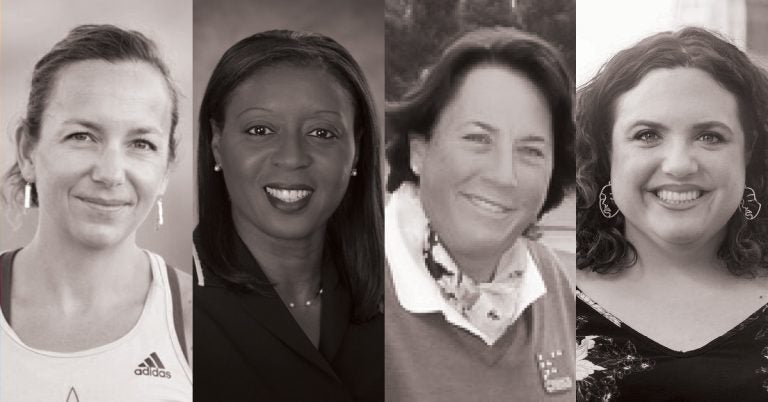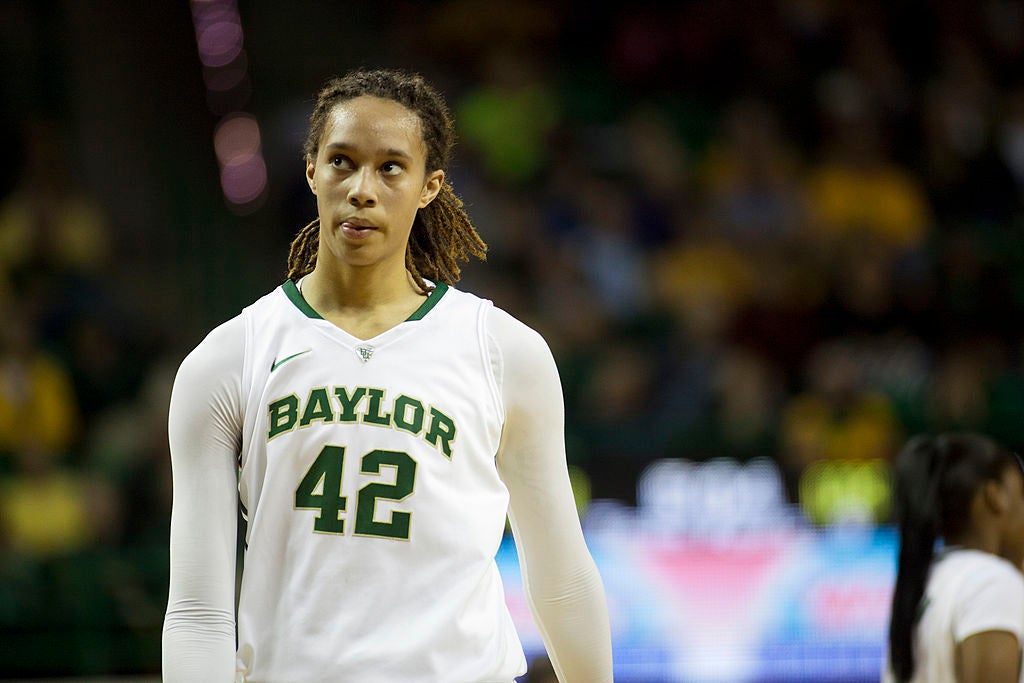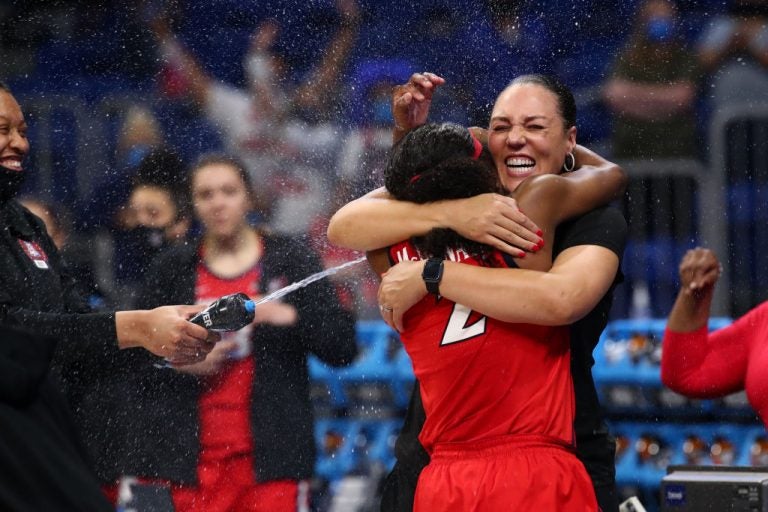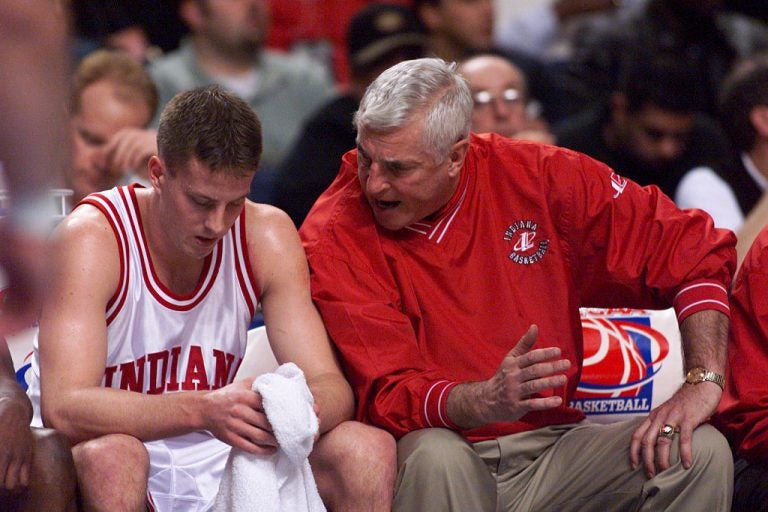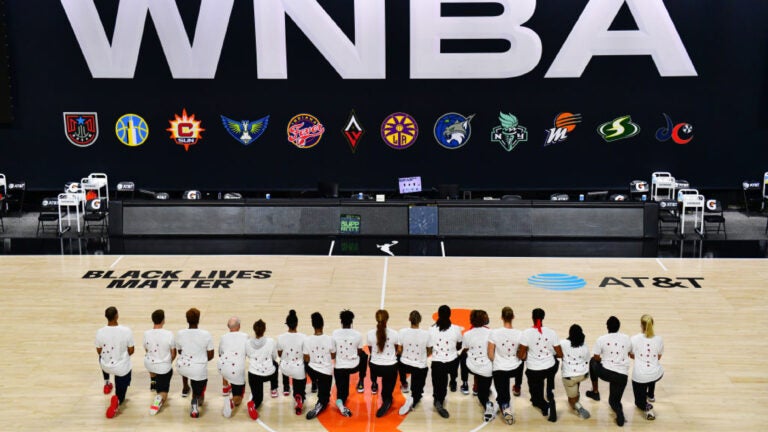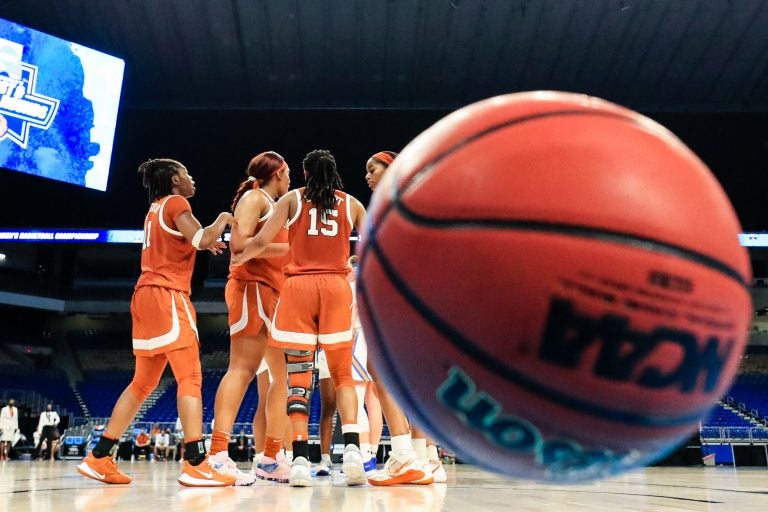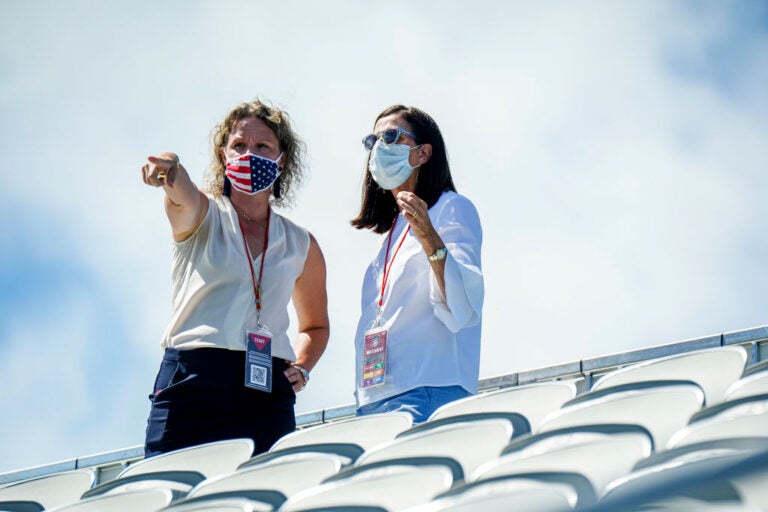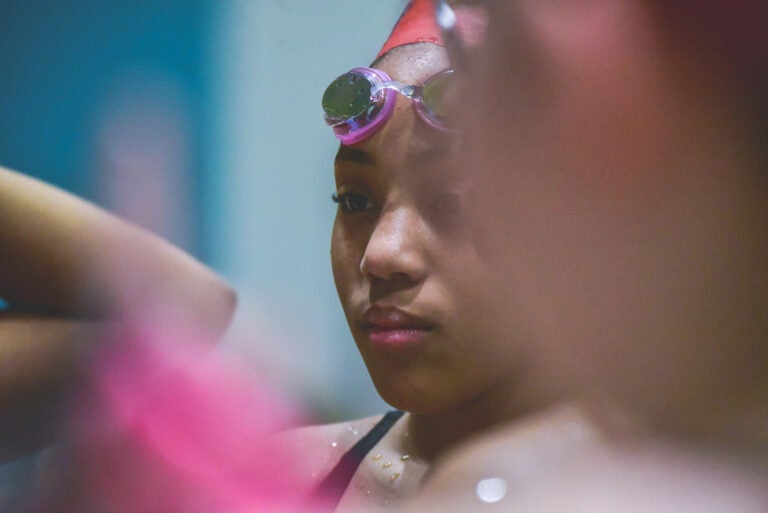How Women’s College Basketball Pressures Players to Fit 'A Certain Kind of Image'
Why this matters
Women’s college basketball has a long history of pushing athletes to conform to white, heteronormative, hyper-feminized standards of appearance and behavior. But cultural change is underway.
Each sport has its unwritten rules. In hockey, rookies should “know their place.” In baseball, players should not celebrate their home runs too passionately or swing on a 3-0 pitch when their team is up by a lot. In women’s college basketball, the unwritten rules hold that athletes should generally look straight.
With the notable exception of Phoenix Mercury star Brittney Griner, past and present college players have been hesitant to speak publicly about having to conform with what amounts to white, heteronormative standards of appearance and behavior. Instead, they drop hints in coded language about “looking nice” or “being ladylike.”
But the pressure is real.
“It’s traumatic,” says Nefertiti A. Walker, an associate professor at University of Massachusetts, Amherst and a former basketball player at Georgia Tech University and Stetson University.
While she was playing, Walker says, she was told to take off her hair wrap – which, for a Black woman, is part of her culture. At Georgia Tech, she says, each player’s locker came with a makeup station, making the values and expectations for the athletes clear.
At Baylor University, Griner said, then-coach Kim Mulkey told lesbian players to remain closeted for fear that their sexual orientations would hurt the program’s recruiting. (Griner also famously told Elle magazine that she “[didn’t] need that shit,” referring to the Women’s National Basketball Association’s makeup classes.)
In 2007, then-Penn State women’s basketball coach Rene Portland resigned after a 27-year career at the university in the midst of a series of allegations that she had a “no lesbian” policy on her team. In 1986, she told the Chicago Sun-Times: “I will not have it in my program.” In 2014, Haley Videckis and Layana White, two former Pepperdine University players, sued the university and head coach Ryan Weisenberg for discrimination, claiming they were harassed by coaching staff and trainers because of their relationship. (They lost their case.)
“Among our top 25 teams, we don’t get to see the superstar athletes be out, talk about it, talk about their girlfriend, just like a guy would talk about his girlfriend or his life," Helen Carroll, who coached at the University of North Carolina at Asheville and was a Division III athletic director, told the Tampa Bay Times in 2015. “The women who are lesbians don’t get to do that.”
Research shows that over a quarter of LGBTQ+ student-athletes have reported being harassed or bullied because of their sexual orientation, and queer collegiate athletes are more likely to report harassment than their straight counterparts. Some National Collegiate Athletic Association schools have student handbooks that actually prohibit homosexuality; those schools include Baylor, Oral Roberts University, and Harding University.
“The most difficult part for the players is that they are having to manage intersecting oppressions at an age and a time when they are still trying to come to know who they are,” says Walker.
The roots of these persistent, hyper-feminized ideals go back over a century to a time when many in society feared that sports participation would make women “too masculine,” threatening their roles as wives and mothers. Mulkey likely internalized these norms from her own coach, Sonja Hogg, who started the Louisiana Tech University’s women’s program in 1974 and coached Mulkey from 1980 to 1984. Tech won the very first NCAA Championship in 1982 and was a dominant program that many star players wanted to be part of in the 1980s.
Hogg also believed that her players should be feminine, well-mannered, and delicate; because she didn’t like her players showing their armpits, they wore jerseys with sleeves. Mulkey became an assistant coach in 1985 and described a Lady Techster to Sports Illustrated in 1986: “We like them to be winners on court,but nice-looking ladies off it,” Mulkey said, according to an excerpt published in the Power Plays newsletter. “You don’t wear raggy old jeans to class. There are some things a Lady Techster just can’t do." The article described Mulkey as someone “who might wear pigtails on court but is the picture of proper Southern womanhood as a coach and recruiter.”
Of the players’ locker room routines, Hogg told Associated Press reporter Dick Young in 1979, “Mine won’t get in a gang shower together. They wait till they get back to the hotel to shower and change. They’re still pretty modest, and I kind of like it that way.”
More than 40 years later, those norms continue to influence the culture of women’s college basketball. “You need to fit a certain type of image when you’re in college,” the WNBA’s Courtney Williams told me in 2019, referring to the pressure to conform to more traditionally feminine ideals. “Your coaches and stuff tell you that, too.”
Of the players in certain college basketball programs, one current WNBA player told me, “I remember being at the Final Four like, ‘y’all look very uncomfortable in those dresses.’” Williams attended the University of South Florida; her photos from WNBA draft night, where she had long, straight hair and wore a dress and heels, makes that reality visible. Her presentation has changed significantly in the six years she’s been in the WNBA; she wears her hair short now, and she favors T-shirts and baggier pants and shorts.
Walker points to WNBA players’ draft photos as evidence of “the policing and stifling of players in college who don’t fit a heteronormative, white, Christian standard.”
“Looking at those athletes and how they’ve evolved in how they present themselves from draft night to a year out to two years out is indicative of the oppressive culture of college athletics,” Walker said.
The WNBA has not always embraced players being themselves, either. A 2002 Sports Illustrated article described “the hyper-heterosexualization” of a league in which players attended makeup classes and were encouraged to wear dresses, ushers in New York City repeatedly tried to confiscate LESBIANS FOR LIBERTY fan banners, and marketers played up the personal narratives of players with male partners while omitting those of lesbian players.
“I think early on, in terms of marketing, there was just this push, you know, to be super feminine or maybe to be a bit more girly – and if you are those things, that’s great,” the Seattle Storm’s Sue Bird, who was drafted out of the University of Connecticut in 2002, told the Courtside newsletter. “But if you’re not, now there’s a space for you to be yourself. And that’s a big difference, especially in my time, early on to now.”
But pressure remains. “No one talks about it, but as a woman you get overlooked if your look isn’t what they want to promote,” the Connecticut Sun’s Jonquel Jones tweeted last year. “If u don’t fit into the normal stereotype of what feminine is or what it ‘should be’ you lose opportunities. Women have to be so much more marketable than men.”
Related: A New Case for Diversity in College Sports
Back on campus, players understand that their post-collegiate careers depend on exposure. If they want their school’s social media team to feature them, or if they want to be invited to post-game interviews or pressers, or if they want to have the local press seek them out for coverage, then conforming to certain standards can help. Research shows that white players with a particular aesthetic disproportionately dominate WNBA coverage. It’s hardly a stretch to assume the same holds true at the NCAA level. Chennedy Carter, who was drafted fourth overall out of Texas A&M University in 2019, spoke of the frustration she felt watching first pick Sabrina Ionescu’s name dominate discussions of her entire draft class.
In college, homophobia even impacts the coaches. A study conducted last year by the Tucker Center for Research on Girls and Women in Sport at the University of Minnesota found that very few coaches (42 of 10,697) of NCAA Division I women’s teams at any position are openly gay within their online biographies. And while that number has increased slightly since the center began monitoring the data in 2011, it’s still incredibly low. As of 2019, there were only about five openly gay head coaches in college basketball.
Race also plays a role. Women’s college basketball is 43 percent Black at the Division I level and over 70 percent Black at the professional level. “Just recognizing the diversity of college athletics is in no way an indication of how inclusive it is,” Walker says. “The diversity and amount of Black people you see in a space as the employees– the athletes – is no indication of the amount of power or agency they have to be who they know they are. They are still having to act under the cultural norms set by white college athletic directors and coaches.”
Over time, a more diverse coaching pipeline could create a cultural shift. While the WNBA allowing its players to live openly and authentically – something on which the league’s hand was forced as players began taking control of their own public images with the rise of social media – may have some trickle-down impact on college basketball, real change is more likely to happen as more former players are hired to run programs.
In the NCAA, coaches have historically been white and have remained in their positions for very long tenures, particularly at the top programs. Mulkey was at Baylor for 21 years before leaving for Louisiana State University this year; Muffet McGraw retired last year after 33 years leading Notre Dame; Geno Auriemma has been at UConn for 36 years, with assistant head coach Chris Dailey alongside him for the entirety of that time. These coaches tend to adhere to more formal styles of dress for themselves, and their programs have similar aesthetics. Smaller programs tend to imitate the larger ones, believing that their culture norms produce winning teams.
“These coaches want to be like a Kim Mulkey. That’s who they are emulating,” says Walker. “But regardless of the fact that it’s great a woman is receiving the kind of respect normally reserved for male football coaches, she’s incredibly problematic for the culture and progression for college basketball.”
Younger head coaches of color, like Dawn Staley at the University of South Carolina and Adia Barnes at the University of Arizona, don’t play by the same rules. As former players themselves, they wear athletic zip-ups or T-shirts and sneakers on the sidelines of games. In her first year coaching at Arizona, her alma mater, Barnes says she realized that “culture was everything.” While Staley’s teams have been criticized for being “too Black” or “too loud,” that’s exactly how she wants it. And while Staley has been characterized as “strict” or “hard to play for,” Walker points out that there is a difference between strictness about curfew or social media usage and strictness that polices someone’s identity or expression.
Related: Dawn Staley: Playing the Long Game
Charmin Smith, head coach at University of California, Berkeley, wears Oxfords or loafers on the sidelines, and she credits seeing University of Kentucky assistant coach Niya Butts wearing bowties and Chuck Taylors on the bench as inspiration. At the WNBA level, former player and current owner of the Atlanta Dream Renee Montgomery is centering Black women and Black culture in everything her players do.
Increasingly, there is less room for racist and queerphobic pressure within the sport.
The next step? College players realizing the power that they have to express their true identities – and using it accordingly. In 2015, Taylor Emory chose to go to Tulane University because she knew she could be openly gay there and it wouldn’t be a problem.
The more that like-minded players follow suit, Walker says, the more the culture of the sport will be forced to evolve.
“Because of the resistance of the athletes, they are making choices about where to go [play] based on whether they can be who they are,” she says. As a result, she says, “coaches are starting to loosen up their policing of their athletes – because if they don’t, they will lose them to other programs where they can be their authentic gay, Black, masculine selves if they want to.”
Monthly Issue
Beyond the Binary in Sport
The spectra of sex, gender, and sexuality challenge our traditional understanding of sport and competition, but are increasingly central to the conversation around athlete and fan experience.
With legislation and organizing increasing around how these various identities intersect, sport makes a natural landscape for discourse and broadening our knowledge of these conversations. How are perspectives changing, and what can we discover by diving into the multitudes underneath these nuanced topics?
Related
